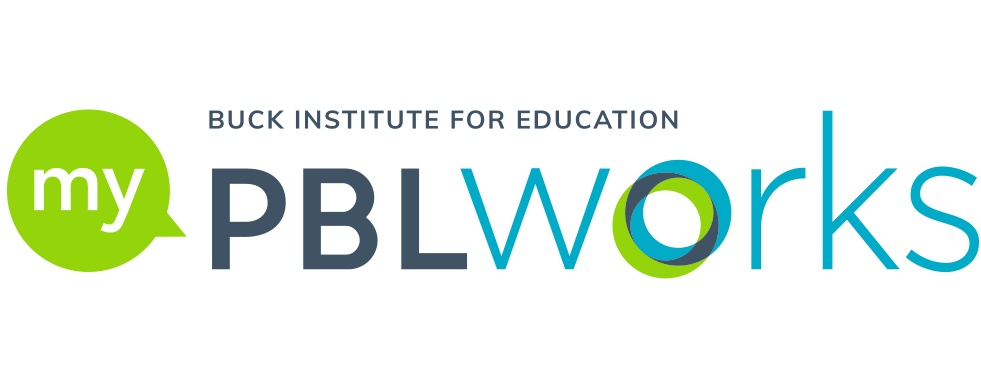For Gold Standard PBL, What Matters Most for Teachers?
What helps students succeed with Project Based Learning? Although a handful of kids are capable of tackling in-depth inquiry on their own (meet Jack Andraka), most students depend on teachers to guide them through the learning experience. So at the risk of adding another acronym to the pot, I think it’s worth focusing on PBT—Project Based Teaching.
As the Buck Institute for Education defines a new gold standard for Project Based Learning, the role of the teacher is getting deliberate attention. (BIE Executive Director John Mergendoller explains the rationale for #goldstandardpbl in a previous post and also in this Edutopia interview.)
For more than a decade, I’ve been interviewing teachers about the deliberate shifts they are making in classroom practice. What motivates teachers to move away from traditional, textbook-and-test-based instruction and adopt PBL? Some say they want an approach that makes more authentic use of digital tools. Others are looking for ways to better prepare students for college, careers, and active citizenship through learning experiences that go deeper than surface-level understanding. And some are concerned about a lack of student engagement. They’re looking for strategies to give students more voice in their own education and to increase relevance by connecting learning with the world beyond the classroom.
Here’s another factor worth considering: For most of today’s teachers—even those just entering the profession—it’s unlikely that they experienced PBL as students. That means they have to reimagine what’s possible in the classroom. For teachers who have never seen projects in action, let alone design or manage them, implementing PBL the first time can feel like a calculated risk.
In Reinventing Project-Based Learning: Your Field Guide to Real-World Projects in the Digital Age (expanded 2nd edition just released by ISTE), we highlight a number of considerations for teachers who are thinking about giving PBL a try. If you’re a teacher contemplating a shift to PBL, you are likely to reconsider:
- Your learning goals. Be ready to rethink your expectations for what students will know and do, to include not only significant academic outcomes but also such competencies as collaboration, critical thinking, and creativity.
- The way you engage with students. Be ready to step off the stage and interact with your students differently. Get comfortable with “messier learning,” with students working more autonomously (and not necessarily all doing the same thing at the same time).
- Your classroom management style. Be ready to help students become better at managing their own efforts.
- The physical arrangement of your class. Be ready to reconfigure the hardware—desks, computers, and other furnishings—to facilitate teamwork and collaboration.
- How you think about assessment. Be ready to reevaluate what you need to pay attention to throughout the learning process (not just at the end), and adjust your teaching plan based on what you notice.
- How you think about community resources. Be ready to link your students to experts and other resources outside the classroom.
- What you collect. Be ready to reconsider which artifacts of learning are worth evaluating or using to prompt reflection.
- How you communicate with parents and colleagues. Be ready to explain your reasoning for adopting PBL, and encourage parents, peers, and other community members to find ways to support project work. For example, they might provide audience feedback, share their expertise, or help with the logistics of field research.
There’s a solid research base about the benefits of PBL for students. You may be wondering, is PBL worth the trouble for teachers?
The answer is, “Yes, but…” To get comfortable with PBT, most teachers need sustained professional development, regular time for collaboration and peer critique, and administrative support. When those pieces are in place, teachers say they like their work more and enjoy the creative challenge of being the designers of projects. (For example, here’s a statewide study about PBL implementation that asks about teacher perspective.)
Manor New Tech, a high-performing PBL high school in Texas, leverages a variety of teacher supports to achieve outstanding results for students. An Edutopia case study about the school outlines such practices as “professional development Mondays,” critical friends protocols, mentoring pathways for master teachers, and more.
In important ways, the process of getting better at Project Based Teaching mirrors what happens with student learners during PBL. Time (and processes) for critique, feedback, and revision matters for teachers, just as it does for students. In-depth inquiry is what takes student understanding deeper. Inquiry is also what helps teachers answer their own Driving Question: How can I design meaningful project experiences to engage my students? A growth mindset helps students advance from novice to expert. So, too, do teachers get better with practice and reflection.
To view or download this resource, log in here.
Login